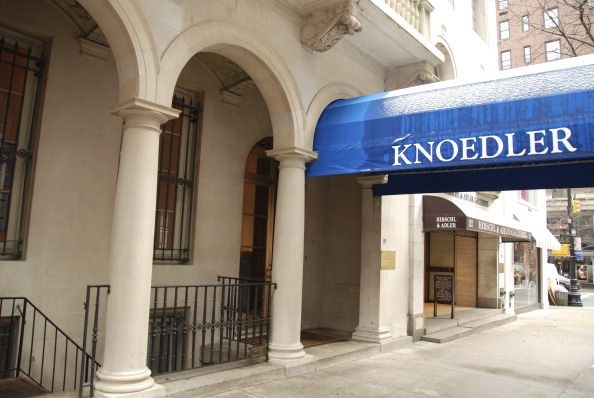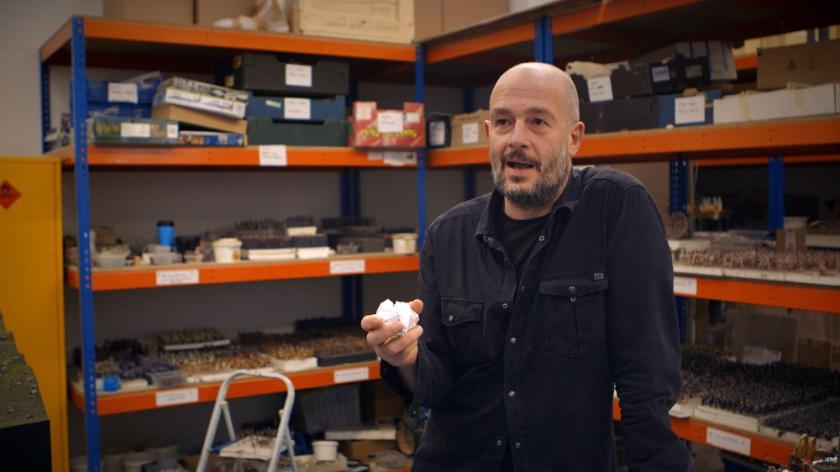This programme was not ironic, humorous or in any way lighthearted. I’m fairly sure of that, but worry that perhaps I’ve missed the joke. A withering take-down or a meaty exposé of the corruption and excess of the extremely wealthy would have served a purpose, but this was neither. It pretended to offer a salacious glimpse behind closed doors but instead delivered a congratulatory slap on the back to the villains we love to hate – it seemed, in fact, to be a straightforward “Banker’s Guide to the Art Market”.
Nevertheless, the realisation that the narrator was Stephen Mangan, the actor who played Lexus-loving Dan in Alan Partridge, seemed an indication, if somewhat leftfield, that this was a film made with a barely-stifled snigger. And Jeffrey Archer, surely there for his comedy value alone, only gave credibility to the idea that this was in fact satire: “I’ll make a statement now concerning the buying of pictures which you’ll have to think about for a few seconds”, he began. Tense anticipation followed. “I can’t afford my own pictures. If they came on the market I couldn’t afford to buy them, the prices have just gone, in some cases … STUPID!”
 Clearly Mr Archer doesn’t have to worry too much about things like house prices then. If he did he’d know that the people shaking their heads at the price of a Basquiat are, in a brief moment of overlapped experience, having a similar if less existential crisis to the folk wondering how on earth a two-up two-down in Croydon can be worth £350,000.
Clearly Mr Archer doesn’t have to worry too much about things like house prices then. If he did he’d know that the people shaking their heads at the price of a Basquiat are, in a brief moment of overlapped experience, having a similar if less existential crisis to the folk wondering how on earth a two-up two-down in Croydon can be worth £350,000.
Historically, the art market has thrived reliably at times of economic inequality, and as the gulf between rich and poor continues to widen, London’s art trade isn’t just thriving, it’s booming like never before. As Jim Chanos, an oddly likeable hedge-funder rather chillingly put it: “After you’ve bought your three homes and five Ferraris, art seems to be the natural place to put your excess cash, looted from a central African country.”
If Chanos’s words seemed like a cue for some exploration of the art market as social barometer, its buoyancy inversely proportionate to the spiralling living standards of society’s poorest, think again. If the funding cuts that have forced museums to use ever more in-your-face tactics to extract money from visitors seemed a thought-provoking contrast to the band of wandering plutocrats hoovering up art to be stored tax-free and unseen in offshore havens, think again.
hadn’t he heard about Brexit?But this was not just a failure to locate the booming art market within a wider social and economic context, it was a failure to take in a bigger picture that surely affects the plutocrats as much as it affects me and you. Big-time collector Adam Lindemann was enthusiastic about London’s position as a global centre of the art market, its internationalism apparently making it a more exciting and dynamic scene than New York. And he brushed off suggestions that the art bubble was a crash waiting to happen. But hadn’t he heard about Brexit?
Either these people know something we don’t, or the programme was done and dusted so far in advance of the referendum that it didn’t even enter the conversation. Either way, it did nothing to help the programme’s sense of purpose, which was then woefully topped off by gallerist Nicholas Logsdail’s sage advice: “You’ll never go wrong if you buy from a good gallery.” This only months on from the spectacular fall from grace of the Knoedler Gallery (pictured above right), one of New York’s most venerable dealers, found to have knowingly sold dozens of fake paintings over a period of nearly 20 years. Let’s be generous and say it depends on your definition of a good gallery.















Add comment